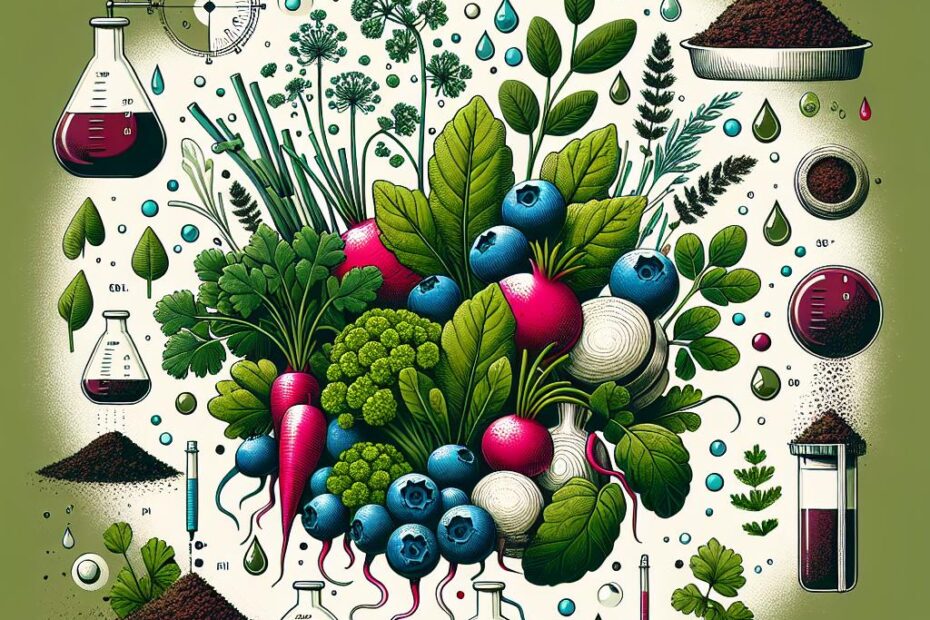Acidic soil vegetables are a group of plants that thrive in soil with a low pH level, typically below 6.0. These vegetables have adapted to grow in acidic conditions and can produce bountiful harvests when provided with the right care and attention. In this article, we will explore the benefits of growing acidic soil vegetables, provide practical tips for cultivating them successfully, and showcase some popular varieties that you can incorporate into your garden.
Benefits of Acidic Soil Vegetables
-
Increased Nutrient Absorption: Acidic soil allows plants to more easily absorb essential nutrients such as phosphorus, iron, and zinc. This can lead to healthier growth and higher yields.
-
Pest and Disease Resistance: Some vegetables that prefer acidic soil, like tomatoes and peppers, are naturally more resistant to common pests and diseases. This can reduce the need for chemical pesticides and herbicides.
-
Improved Flavor: Vegetables grown in acidic soil tend to have a more robust and intense flavor profile. This can enhance the taste of your dishes and make gardening even more rewarding.
-
Diverse Selection: There are a wide variety of vegetables that thrive in acidic soil, giving you plenty of options to choose from when planning your garden. From leafy greens to root vegetables, there is something for every palate.
Practical Tips for Cultivating Acidic Soil Vegetables
-
Test Your Soil: Before planting acidic soil vegetables, it is important to test the pH level of your soil. You can do this with a simple soil testing kit or by sending a sample to a local agricultural extension office.
-
Amend Your Soil: If your soil is too alkaline, you can lower the pH by adding organic materials such as compost, pine needles, or peat moss. These amendments will help create a more acidic environment for your plants.
-
Choose the Right Varieties: Some vegetables, like potatoes and blueberries, are known for their preference for acidic soil. Be sure to select varieties that are well-suited to your growing conditions for optimal results.
-
Provide Adequate Water and Sunlight: Like all plants, acidic soil vegetables require consistent watering and adequate sunlight to thrive. Be sure to water deeply and allow for good drainage to prevent root rot.
-
Mulch Regularly: Mulching your vegetable garden can help maintain a consistent soil pH and moisture level. Organic mulches like straw or shredded leaves can also provide added nutrients as they break down.
Popular Acidic Soil Vegetables
Now let’s take a look at some popular acidic soil vegetables that you can grow in your garden:
| Vegetable | pH Level | Growing Tips |
|---|---|---|
| Tomatoes | 6.0-6.5 | Provide support with stakes or cages. |
| Peppers | 5.5-6.0 | Plant in a sunny location with well-draining soil. |
| Potatoes | 4.8-5.5 | Hill soil up around plants to encourage tuber growth. |
| Blueberries | 4.0-5.0 | Require acidic soil rich in organic matter. |
| Radishes | 5.5-6.5 | Plant in cool weather for best results. |
Conclusion
In conclusion, cultivating acidic soil vegetables can be a rewarding experience for any gardener. By understanding the benefits of growing these plants, following practical tips for success, and choosing the right varieties for your garden, you can enjoy a bountiful harvest of flavorful and nutrient-rich vegetables. Whether you’re a novice or experienced gardener, experimenting with acidic soil vegetables can add new dimensions to your gardening experience and provide delicious additions to your meals. So why not give them a try in your garden this season?
